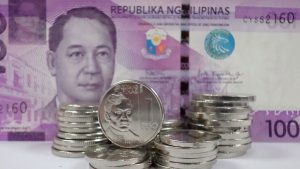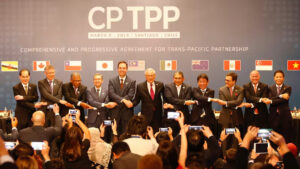Peso snaps three-day climb as trade woes linger

THE PESO weakened anew against the dollar on Monday, snapping its three-day rise, as better-than-expected US jobs data supported bets that the US Federal Reserve would keep rates unchanged for now and amid the Trump administration’s ongoing tariff negotiations.
The local unit closed at P55.77 per dollar on Monday, dropping by 20 centavos from its P55.57 finish on Friday, Bankers Association of the Philippines data showed.
The peso opened Monday’s session flat at P55.57 against the dollar. Its worst showing was at P55.799 while its intraday best was at P55.38 versus the greenback.
Dollars exchanged rose to $2.296 billion on Monday from $2.1 billion on Friday.
The peso declined as the dollar partially recovered over the weekend following the US nonfarm payrolls report released on Friday and amid optimism on countries’ trade negotiations with the United States, a trader said in a phone interview.
The peso dropped on Monday as it corrected from its recent rally that saw it hit an over one-year high on Friday, Rizal Commercial Banking Corp. Chief Economist Michael L. Ricafort added in a Viber message.
The local unit also weakened after US President Donald J. Trump said he had no plans to speak with Chinese President Xi Jinping this week, he said.
For Tuesday, the trader expects the peso to move between P55.50 and P56 per dollar, while Mr. Ricafort sees it ranging from P55.65 to P55.85.
The dollar slipped anew on Monday as a meteoric surge in its Taiwanese counterpart stoked speculation some Asian countries were prepared to engineer revaluations of their currencies to win US trade concessions, Reuters reported.
Asia-Pacific currencies were the major developed market beneficiaries of the fallout from that, and the dollar was down 0.44% on the Japanese yen at 144.3. The Australian dollar hit a five-month high in early trade, and was last up 0.4% at 0.6473.
More dramatically, the dollar slid over 3% against the Taiwan dollar to 29.772, adding to a record 4.4% move on Friday. That brings the Asian currency to near three-year highs.
While Taiwan’s central bank has denied the White House was pressing for a rise in some Asian currencies as part of a trade deal, markets were sensing a shift anyway.
China’s yuan traded offshore hit its highest in almost six months at 7.1879 per dollar as investors wagered Beijing might let its currency strengthen as part of Sino-US trade talks.
However, negotiations still seemed distant and the currency was last at 7.2043 per dollar.
While the Chinese Commerce Ministry has indicated Beijing was evaluating an offer from Washington to hold talks over Mr. Trump’s 145% tariffs, the two sides still seem far apart.
In a TV interview aired on Sunday, Mr. Trump reiterated that he believed China wanted to do a deal, but offered no details or timeline.
Mr. Trump did say he would not attempt to remove Federal Reserve Chair Jerome H. Powell, but also repeated calls for lower interest rates and called Mr. Powell a “stiff.”
The Fed meets on Wednesday and is widely expected to leave rates steady following a solid March payrolls report.
Markets now imply only a 37% chance of a Fed cut in June, down from 64% a month ago. Goldman Sachs and Barclays both shifted their cut calls to July from June.
Yet it was notable the dollar only got a limited lift from the jobs data and was struggling to keep the gains. — A.M.C. Sy with Reuters




